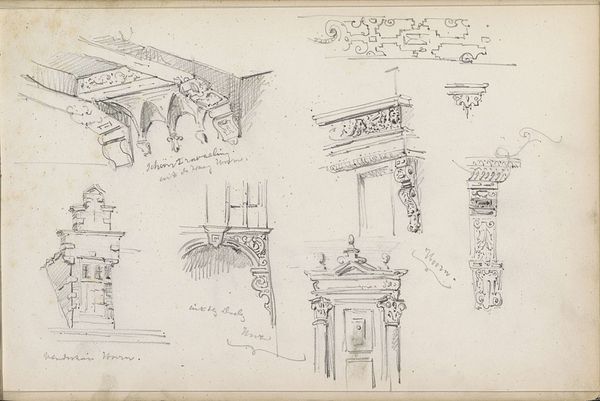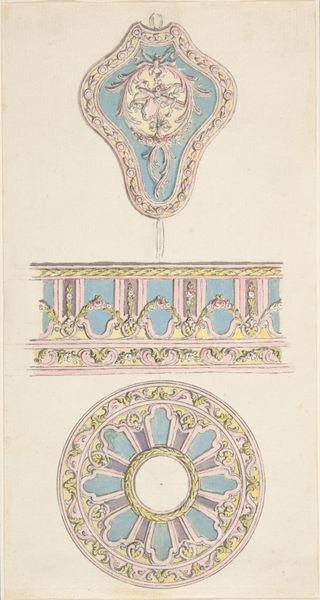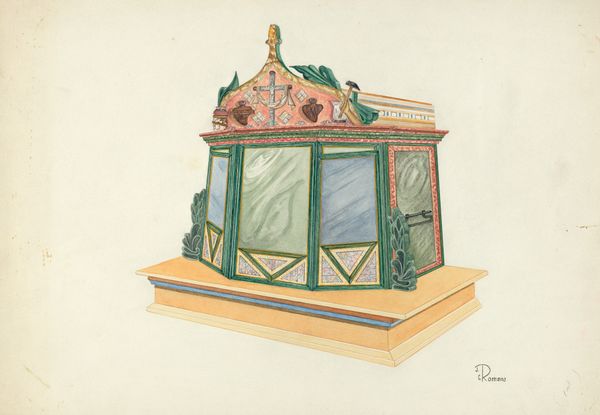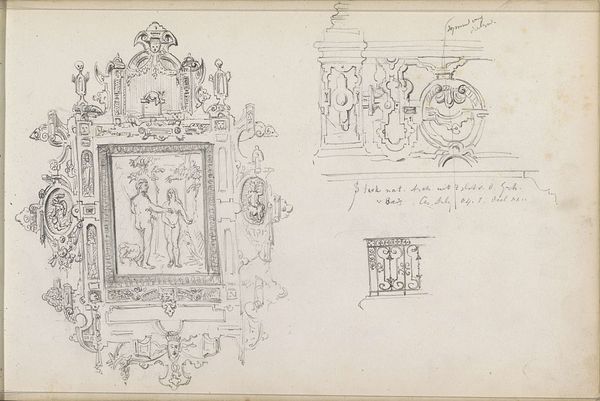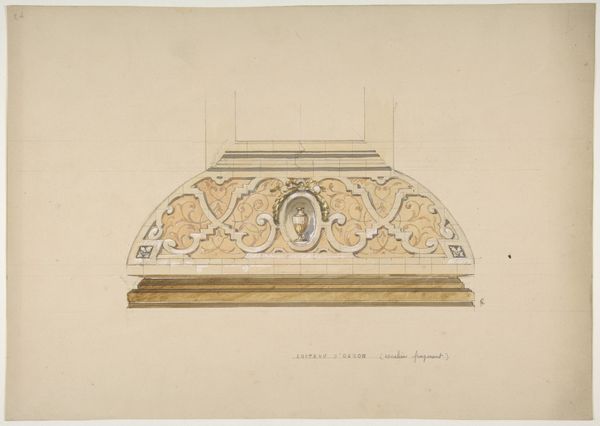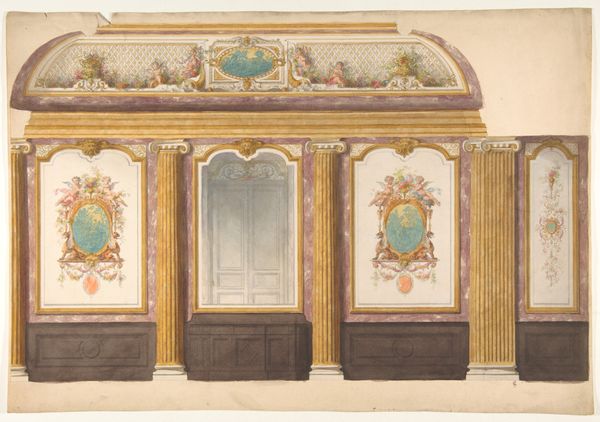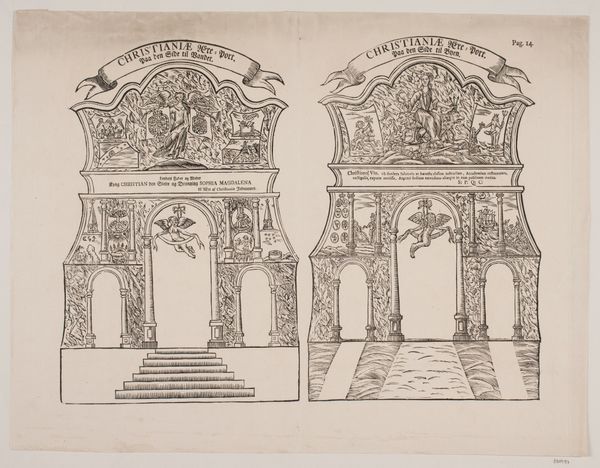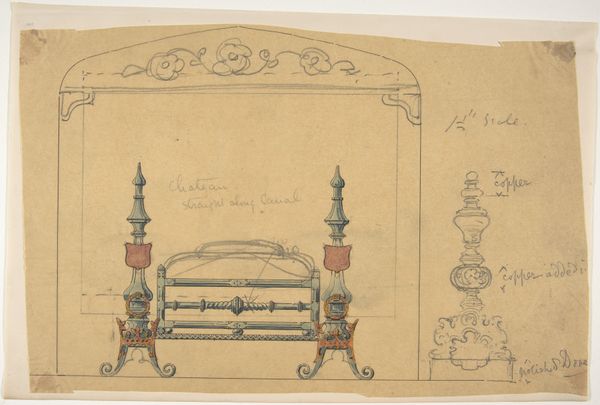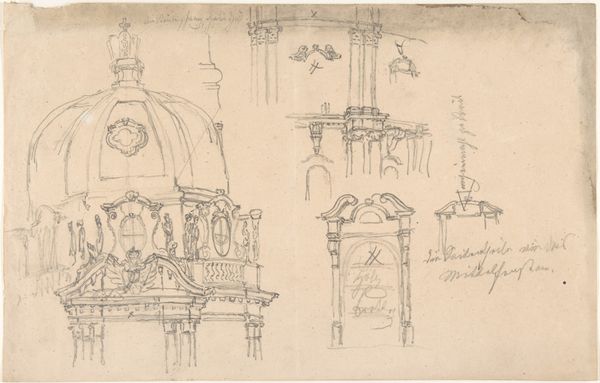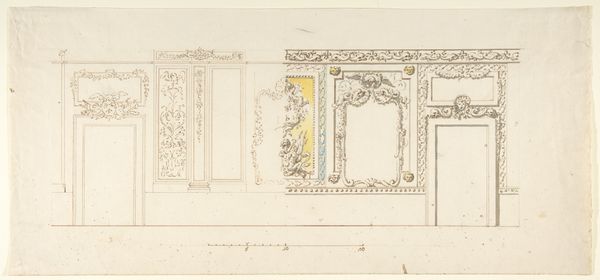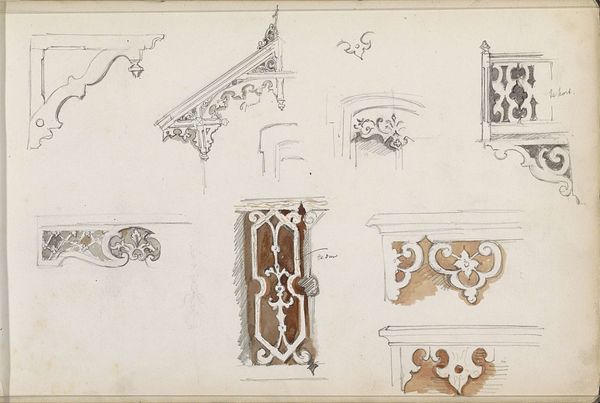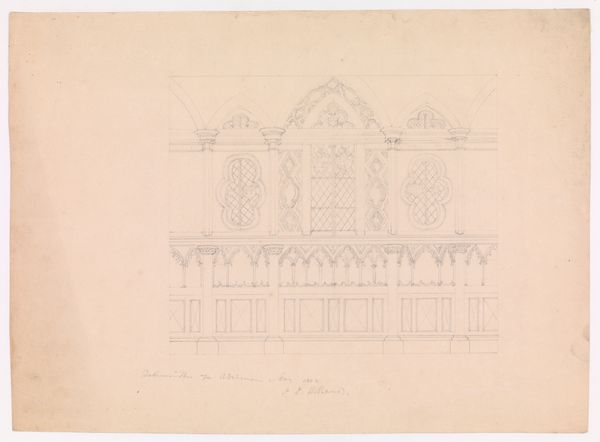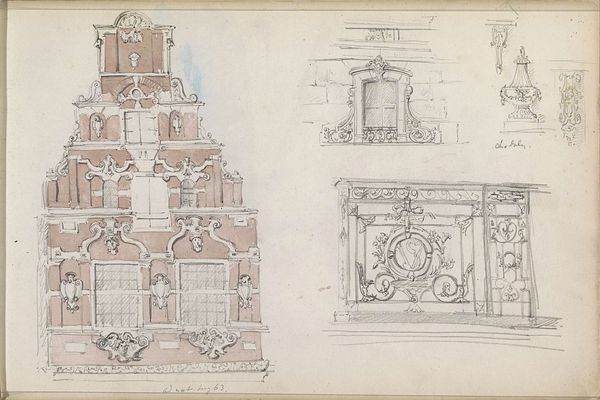
Interieur met koepel, een cassetteplafond in Berlijn en decoraties voor een kroonlijst 1862 - 1867
0:00
0:00
drawing, paper, watercolor, ink, pencil
#
drawing
#
classical-realism
#
paper
#
watercolor
#
ink
#
pencil
#
academic-art
#
watercolor
Copyright: Rijks Museum: Open Domain
Editor: So, this drawing is called "Interieur met koepel, een cassetteplafond in Berlijn en decoraties voor een kroonlijst," made between 1862 and 1867 by Isaac Gosschalk. It combines watercolor, ink, and pencil on paper, and the precision in the details is captivating. What do you notice when you look at it? Curator: The interplay of detailed architectural elements with looser sketches suggests a study, perhaps even a proposal. Notice the garlands, the almost theatrical draping, and the stylized figures within the friezes. The artist isn't just documenting; he's invoking a mood. Do these elements resonate with any historical or cultural context for you? Editor: It does evoke a sense of old European grandeur, like something you might find in a palace or opera house. Is there any symbolic weight to the garlands and figures, or is it purely decorative? Curator: It’s both. Garlands, historically, symbolize celebration and honor, dating back to ancient Roman triumphs. Figures incorporated into architectural design often narrate stories or represent virtues. In this piece, consider how these motifs serve to elevate the space. Can you imagine how this would have been received by the artist's contemporary audience? Editor: I imagine this level of detail was a sign of wealth and sophistication back then. Everything from the color choice to the complex design tells a story of opulence. Curator: Exactly. The image serves as a visual anchor, embodying the values and aspirations of the time. Understanding these symbols allows us to decipher the cultural codes embedded in the artwork, offering us a richer, more nuanced perspective on history and society. What did you learn in our talk? Editor: I've definitely learned to pay closer attention to details like recurring motifs and their origins and that cultural context is always vital in fully grasping the artwork's purpose and its historical weight.
Comments
No comments
Be the first to comment and join the conversation on the ultimate creative platform.
